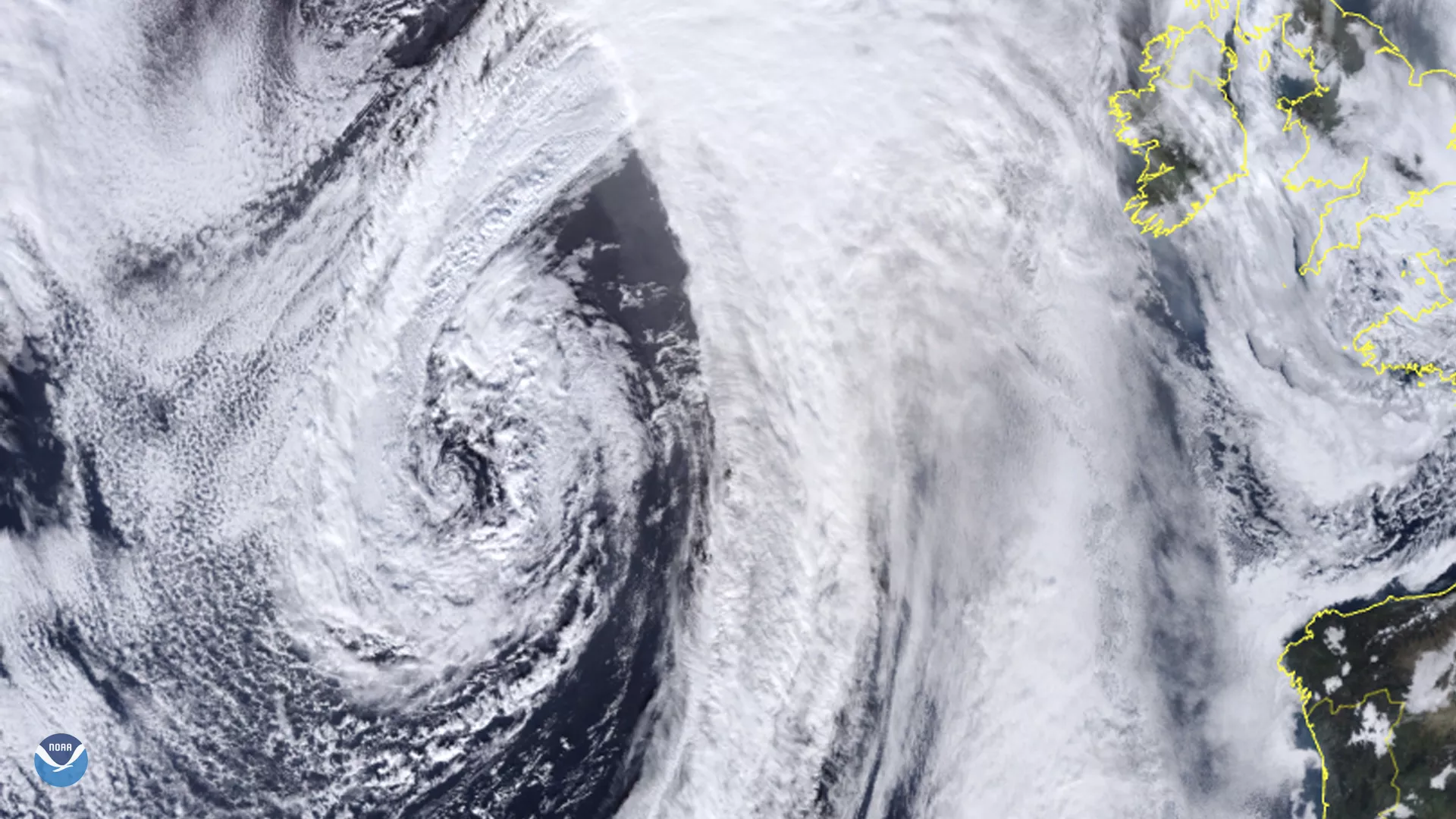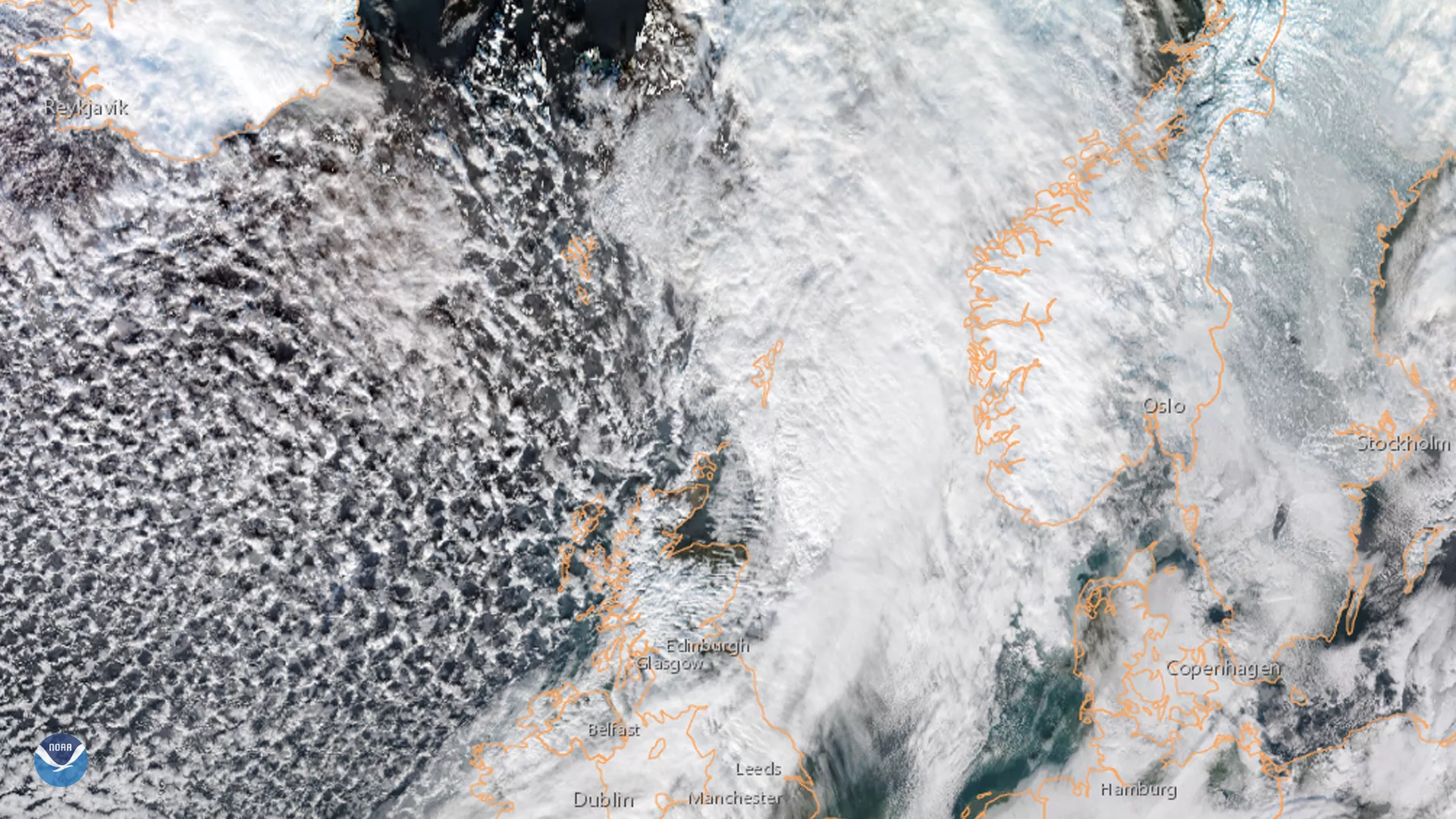
A large, broad cyclone developing over the Norwegian and Greenland Seas was seen by the NOAA-20 satellite on Jan. 1, 2020, and is expected to bring hurricane-force winds, heavy rainfall, and snow as it moves toward Scandinavia, mainly targeting Norway.
The storm comes on the heels of a Norwegian heat record , which reached 66 degrees Fahrenheit (19 degrees Celsius) in the municipality of Sunndalsøra today, Jan. 2, 2020. This is the highest temperature on record measured in the month of January in the country, as well as the combined months of December, January, and February from previous years. The previous record of 64 degrees Fahrenheit (17.9 degrees Celsius) was measured in Tafjord on Sunnmøre in 1989.

The image above shows the storm today, Jan. 2, 2020. The strongest wind gusts are expected on the coast of Nordfjord, Sunnmøre and in Romsdal. Additionally, blizzard conditions are expected in the mountains with wind gusts ranging from 55 to 74 mph due to cold air moving southwest from over the Norwegian Sea.
In lower regions, there is an increased risk of landslides and avalanches due to a combination of the higher temperatures, rainfall, and snowmelt. Varsom, a service provided by the Norwegian Water Resources and Energy Directorate, in collaboration with the Norwegian Meteorological Institute and the Norwegian Public Roads Administration, has posted a yellow warning for snow and ice for large parts of Vestland county as well as southern parts of Romsdal.
These images were captured by the NOAA-20 satellite's VIIRS instrument , which scans the entire Earth twice per day at a 750-meter resolution. Multiple visible and infrared channels allow it to detect atmospheric aerosols, such as dust, smoke and haze associated with industrial pollution and fires. The polar-orbiting satellite circles the globe 14 times daily and captures a complete daytime view of our planet once every 24 hours.